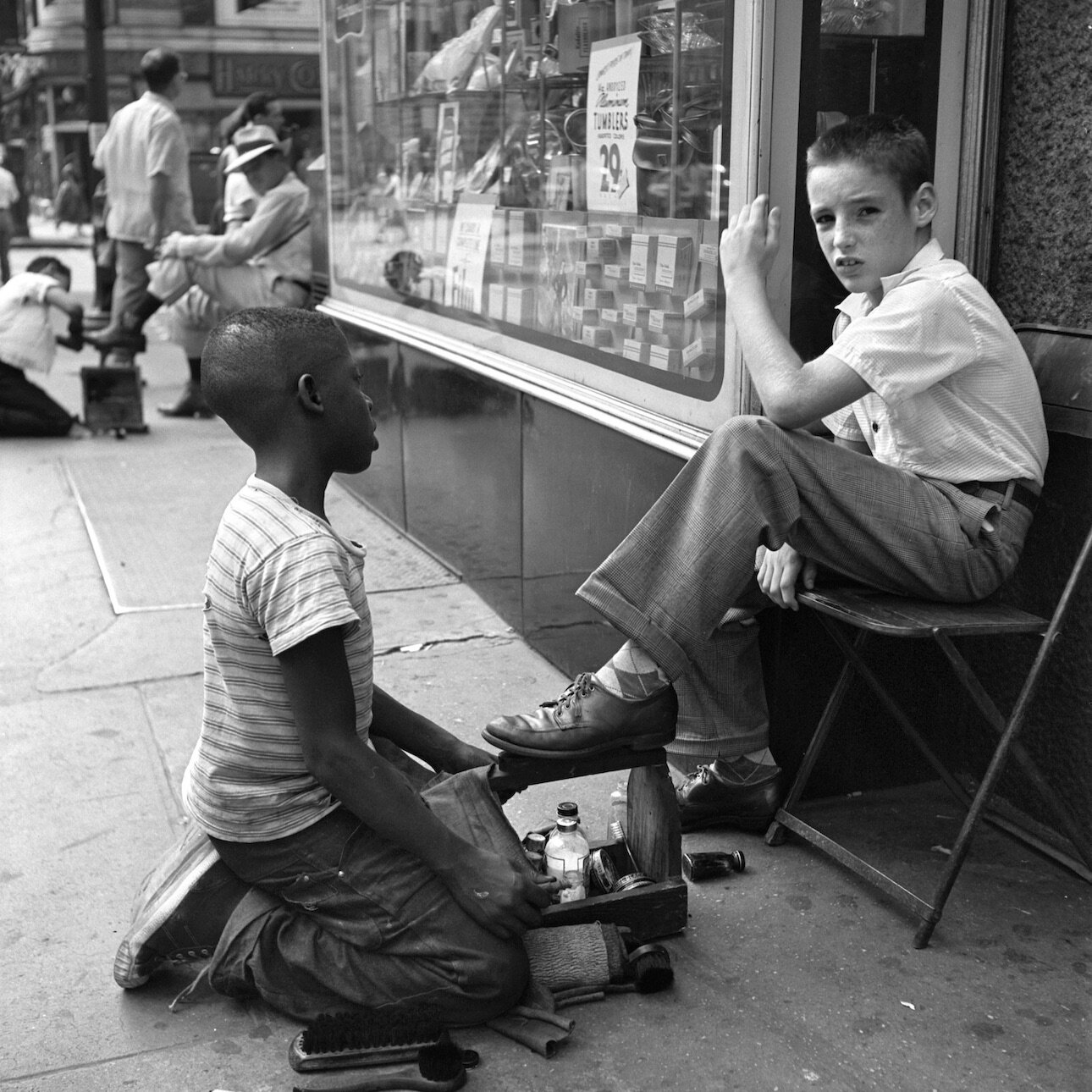Vivian Maier: Unseen Work | Fotografiska
Self-Portrait, Vivian Maier, New York, NY, 1954. © Estate of Vivian Maier, Courtesy of John Maloof Collection and Howard Greenberg Gallery, NY
Written by Trip Avis
Young children amble and skip animatedly along the bustling streets of 1950s New York, drawing their stern, tender nanny in tow. She notices everything, which allows her to multitask. As she minds them, making sure they don’t step into traffic or fall and skin a knee, she takes a moment to snap an image of a passerby with her handy film camera. She photographs snide glances from society matrons. She photographs couples arguing — their domestic drama laid bare on a cement stage — and couples who dolefully move in private, unrevealing silence. She captures wizened old men and cherubic children. She sees them; she quietly, dutifully adds them — unbeknownst even to her — to the annals of photographic history. However, the work itself remains unseen for decades. Fotografiska opens the dusty draperies of time to reveal the fresh, potent intimacy of Vivian Maier’s master class in street photography, as shown in the exhibition Unseen Work. It is on display in New York between May 31 and September 29, 2024.
Vivian Maier, Grenoble, France, 1959. © Estate of Vivian Maier, Courtesy of John Maloof Collection and Howard Greenberg Gallery, NY.
City life often forces us to use our blinders to navigate our busy schedules efficiently. We dodge our fellow city-dwellers like ships passing in the night, failing to acknowledge the heady and boundless sonder that overtakes us if we bother to slow down and savor our surroundings. With her camera, Vivian Maier mapped the vibrant human patchwork of metropolitan spaces, giving her time and attention to many individuals overlooked during her time. Fotografiska posits that “Maier photographed people who others don’t see, those who feature nowhere, relegated to life on the margins [...] in the shadows of that great utopia so in vogue at the time, the “American Dream” and its dazzling glare.” Like Manifest Destiny was for the generations preceding them, cities naively represented to many people the promise of boundless opportunity and a bootstrapping mentality that assured them that anything was possible. However, it was a place to become lost, a gray face in the constant flux of moving bodies. Maier captured these lost faces and turned them into anonymous beacons of mid-century America.
Vivian Maier, Central Park, New York, NY, September 26, 1959. © Estate of Vivian Maier, Courtesy of John Maloof Collection and Howard Greenberg Gallery, NY.
As a nanny, Maier was the embodiment of a sidelined individual — while she wasn’t the parent of the children she nurtured, she was expected to silently and dutifully tend to their needs. In contrast, their parents moved in more rarified circles, unburdened of their children. As she made her way through the great cities of New York and Chicago, she perhaps felt an unspoken kinship with fellow individuals who didn’t fit neatly into the aspirational, “white picket fence” nuclear family dynamic. Children also feature notably in her work, perhaps an ode to the young wards with which she spent much of her time as a nanny. Photographs like Central Park, New York, September 26, 1959, show the personal happiness hidden beneath the callous, impersonal nature of the city. The two images blend into a diptych of tender growth and family life, depicting a young Black father and his child seated on a stone bench. The father looks sheepishly away from the camera, a smile spreading on his face. Maier may have flattered his sensibilities with this sudden family portrait. The placid, bonneted baby rests against his leg, reaching for a pale balloon in the father’s hand; in the second image, the balloon hovers before his face, recalling the Magritte painting The Son of Man.
Vivian Maier, Chicago, IL, May 16, 1957. © Estate of Vivian Maier, Courtesy of John Maloof Collection and Howard Greenberg Gallery, NY.
Among Vivian Maier’s talents as a photographer, perhaps her greatest was her ability to see people for who they were. While they remained strangers — rich, complex lives moving in opposite directions — a brief, shining intimacy punctuated these divergent paths and delivered some of the most revealing images of the 20th century.











